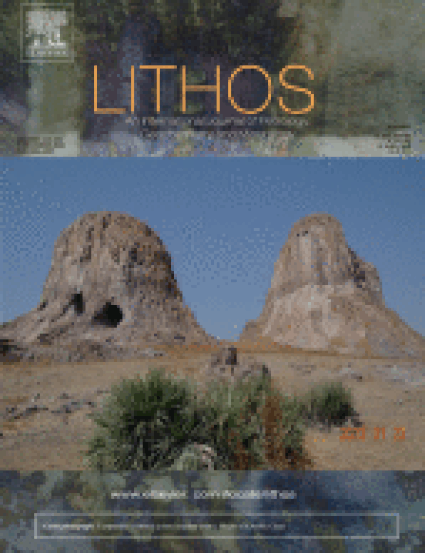
The Lhunze region of southeast Tibet uniquely juxtaposes Cenozoic granitic plutons with subvolcanic rocks in the Tethyan Himalayan Sequence. In this study, the potential petrogenetic connection between two-mica granite and subvolcanic rhyolite porphyry from the Lhunze area is investigated using petrology, geochronology, and geochemistry. Monazite Th—Pb ages imply the two-mica granite crystallized during the mid-Eocene at c. 43.5–43.1 Ma, consistent with previous zircon U—Pb isotope data. Monazite in the porphyry also records Th—Pb ages of c. 44.5–42.9 Ma, suggesting contemporaneous emplacement with the two-mica granite. Porphyritic structure, feldspar aggregates and comb alignment demonstrate that the two-mica granite resulted from transient melt flow associated with melt extraction. Some plagioclase phenocrysts from the porphyry have consistent An contents with the two-mica granite, indicating that both the two-mica granite and the porphyry probably originated from a similar melt. However, the porphyry has a higher SiO2 concentration (72.2–75.9 wt%) than the two-mica granite (69.0–73.0 wt%). In addition, the porphyry is characterized by lower TiO2, MgO, CaO, Ba, Sr, and Zr contents as well as Zr/Hf, Sr/Y, Nb/Ta ratios than the two-mica granite. Moreover, strontium and REE contents of monazite in both the two-mica granite and porphyry also imply that crystal fractionation dominated melt evolution. Whole-rock Sr—Nd and in situ monazite Nd isotope compositions indicate that the porphyry is slightly more radiogenic than the two-mica granite, implying that the porphyry likely assimilated more ancient country rocks during its evolution. We interpret the two-mica granite and porphyry as comagmatic intrusives linked by fractional crystallization of a cognate magma mush, in which the crystals accumulated to form the two-mica granite, and the complementary high silicic melt segregated to form the porphyry. Plagioclase accumulation is responsible for the generation of the high Sr/Y adakitic geochemical feather within two-mica granite. The scenario of complementary melt extraction and crystal fractionation might also have been an important process in forming the Himalayan leucogranites. Regionally, Neo-Tethyan slab breakoff during the Eocene could have increased mantle heat flow and triggered the generation and extraction of large volumes of silicic melt.

For a complete list of authors, please see the article.